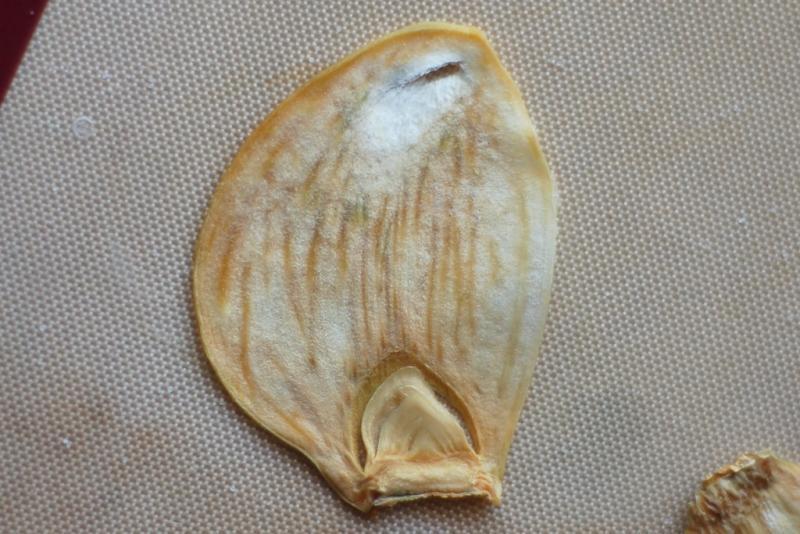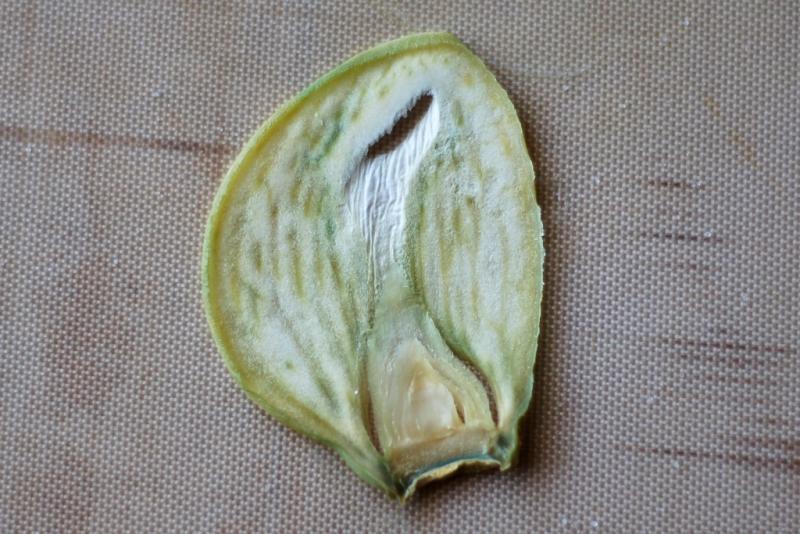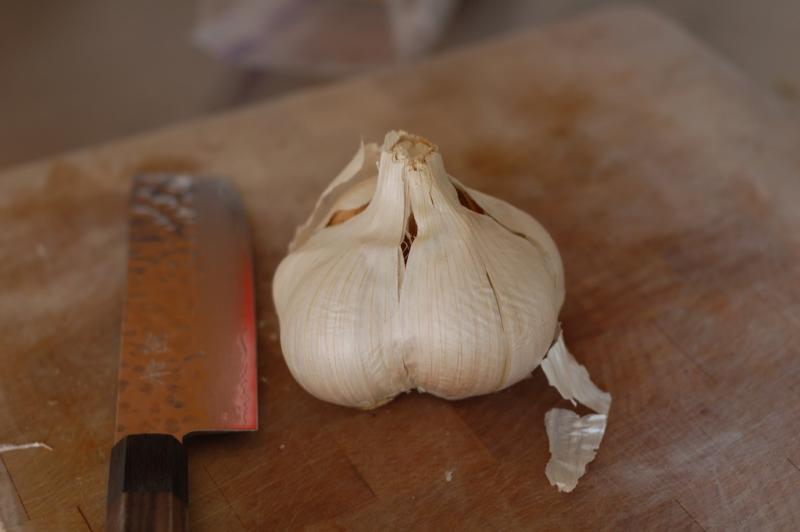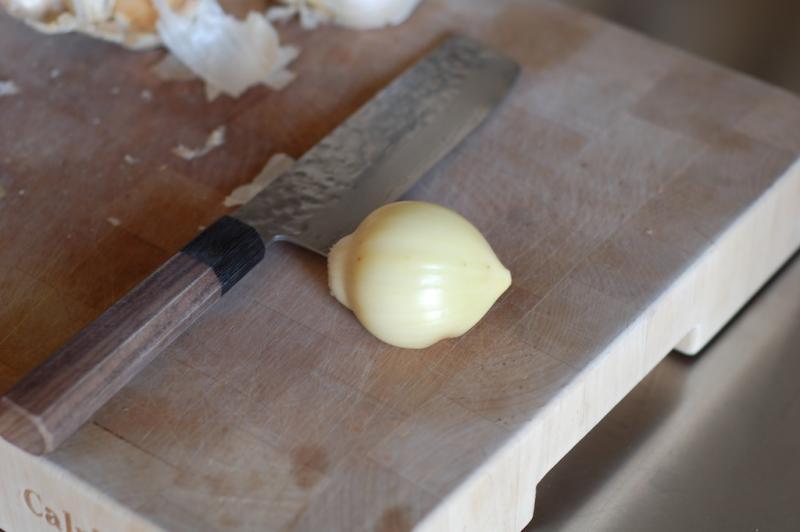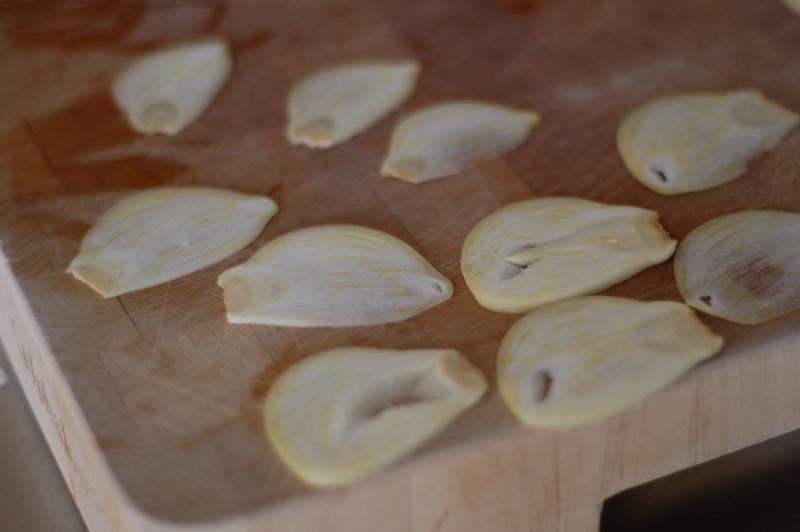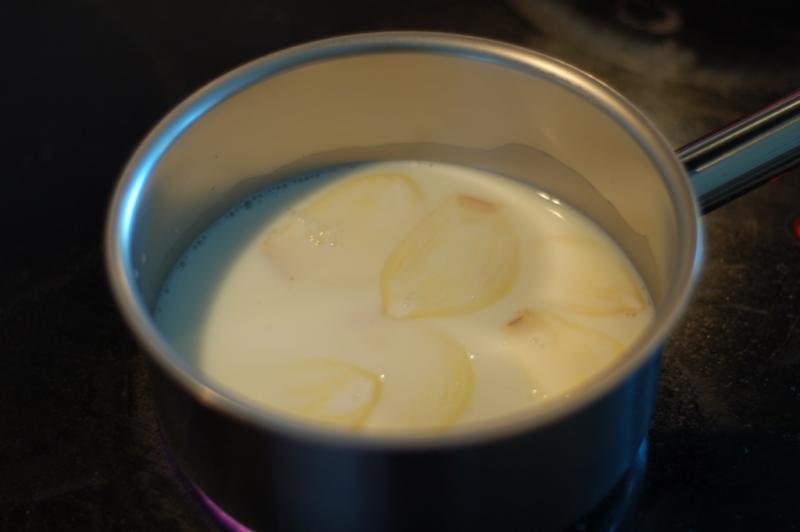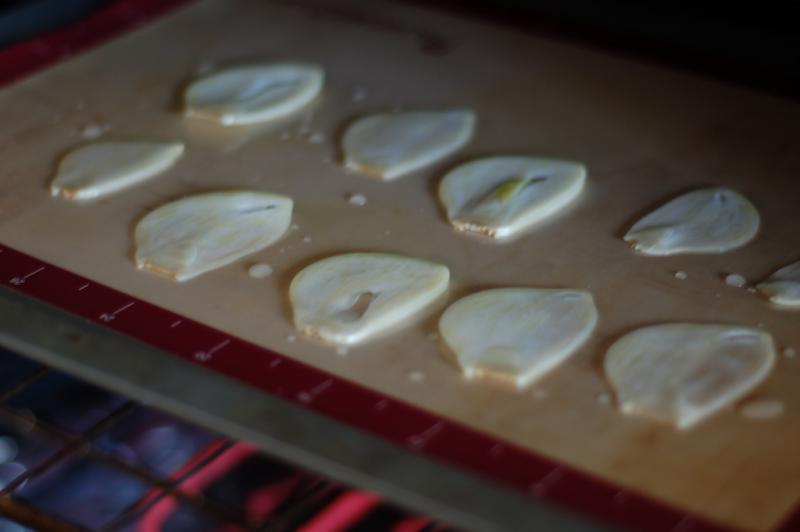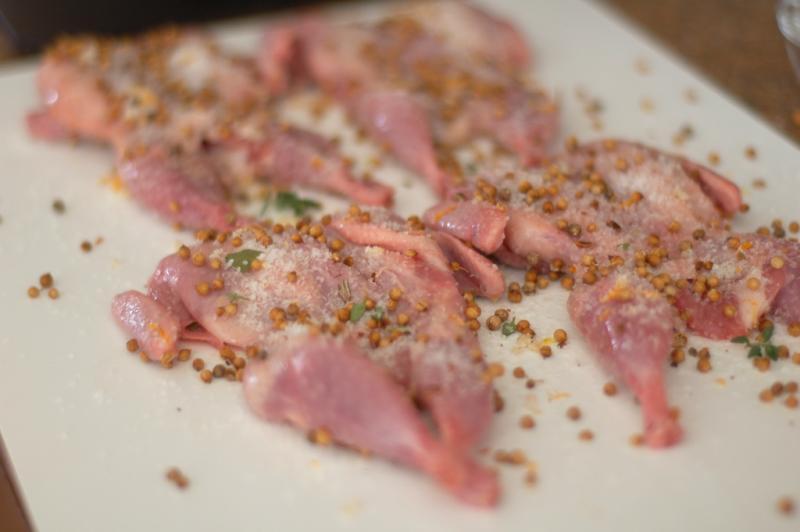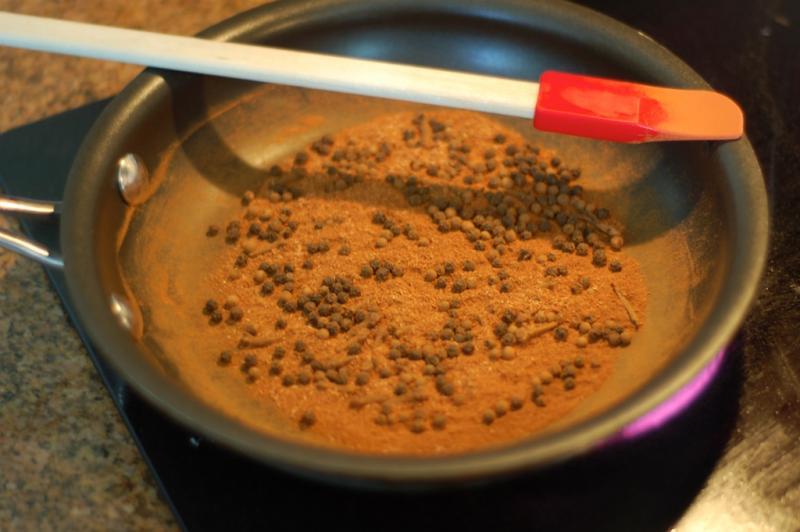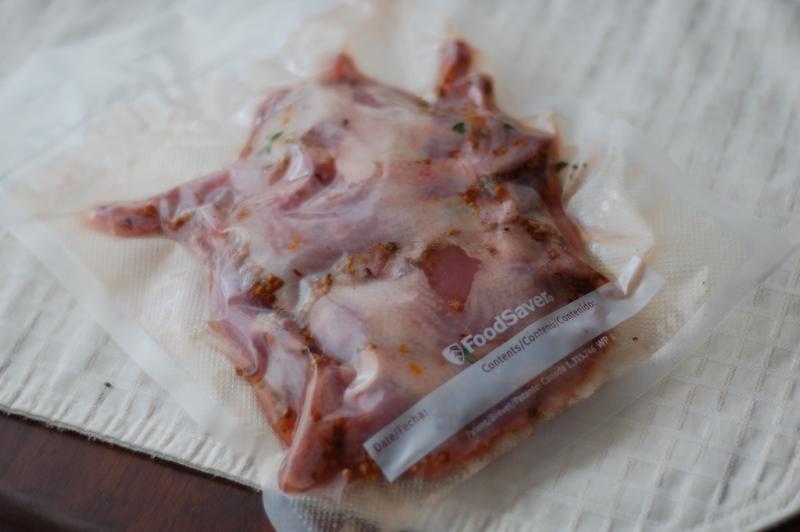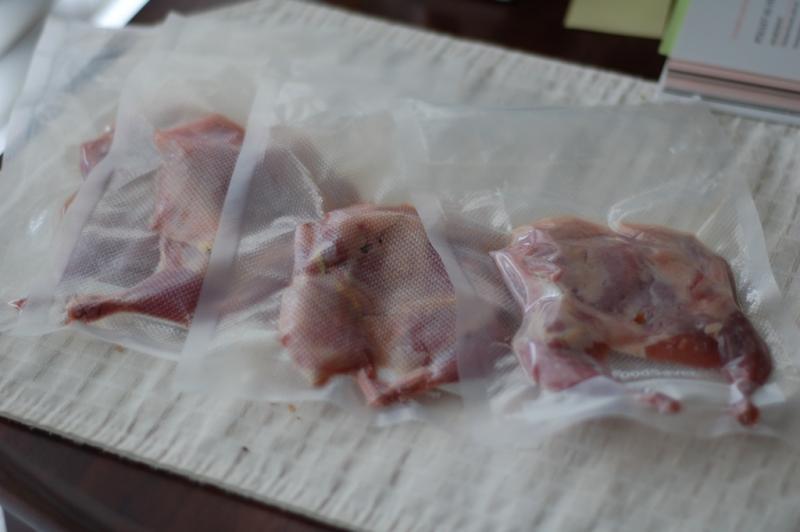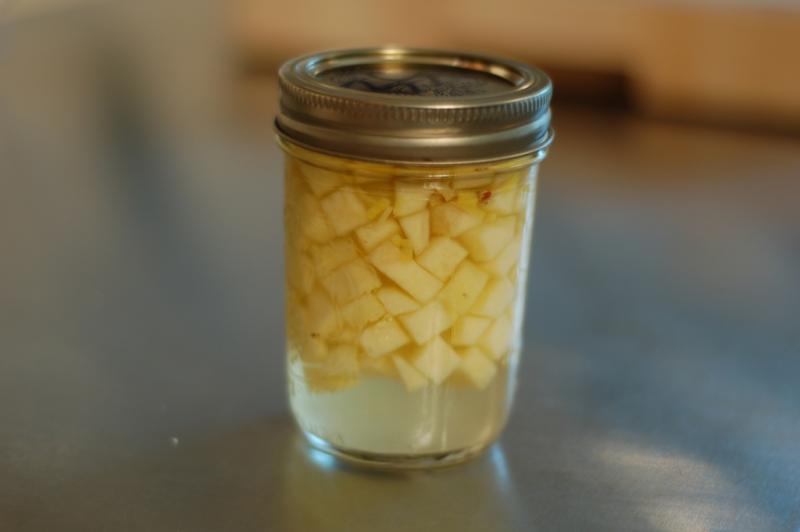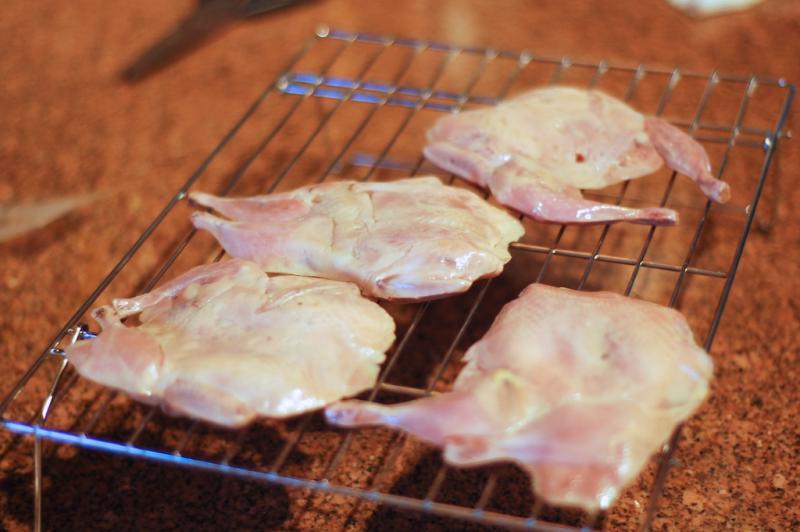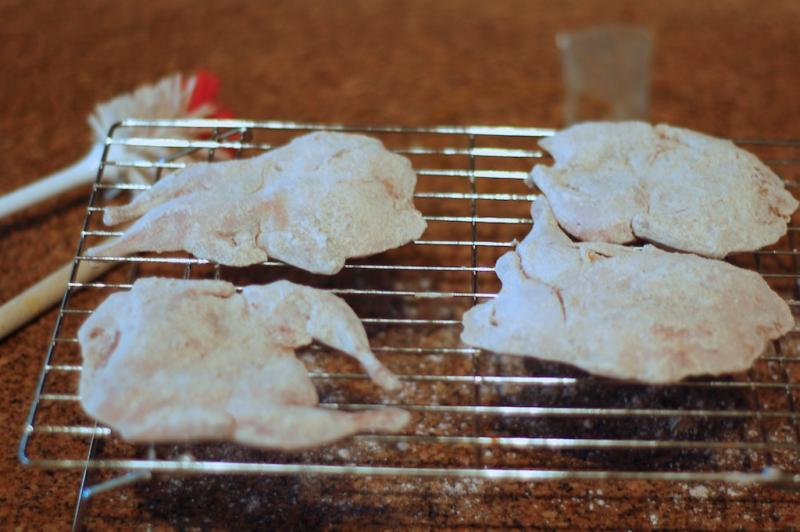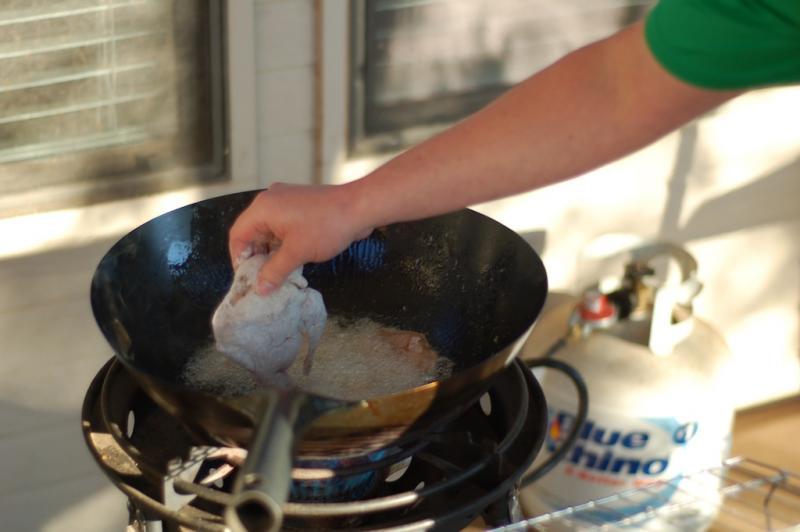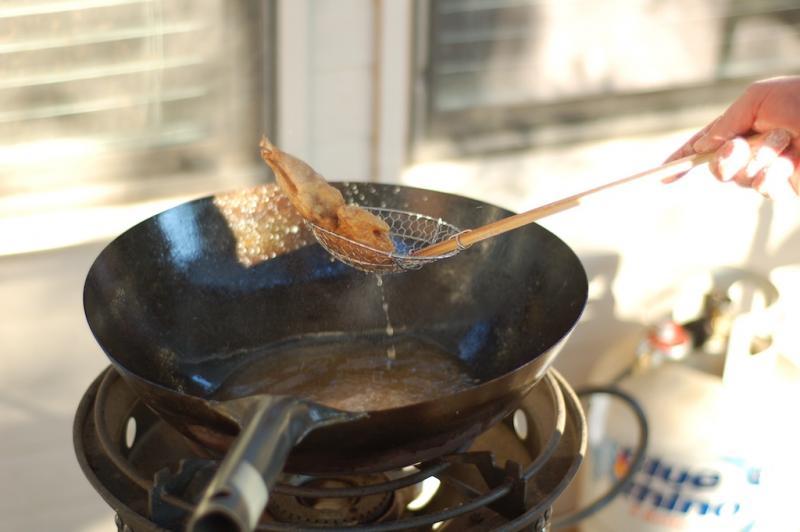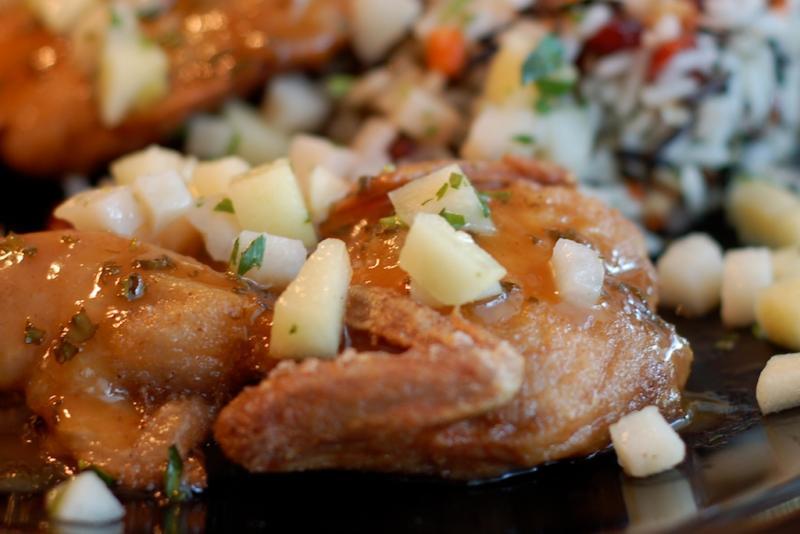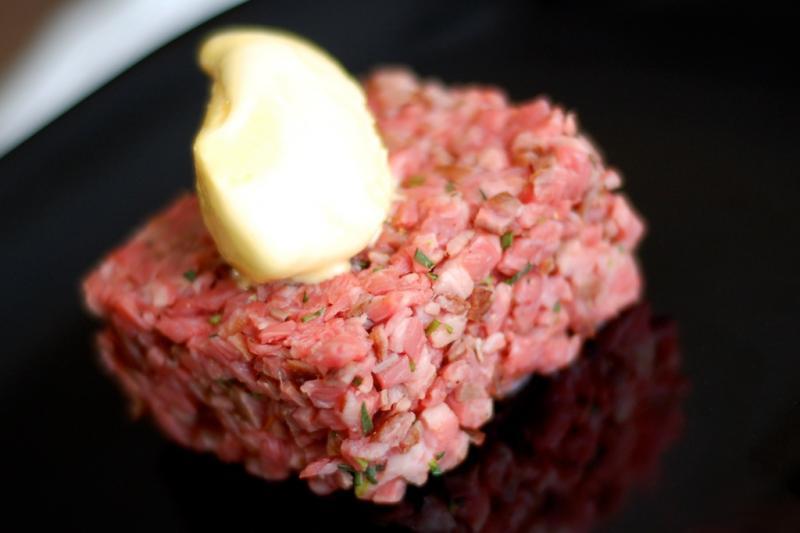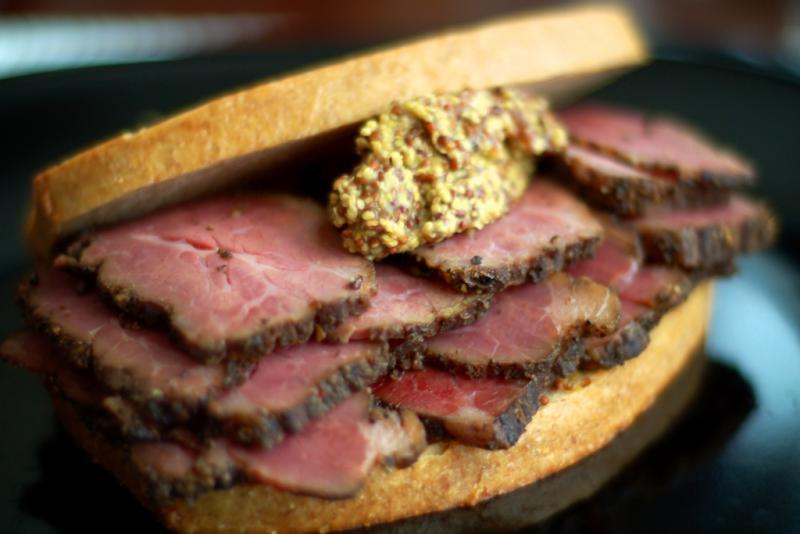-
Posts
10,190 -
Joined
-
Last visited
Content Type
Profiles
Forums
Store
Help Articles
Everything posted by Chris Hennes
-
OK, once fully dehydrated they started to brown a bit so I took them out at that point. The green color appears to have mostly faded: Unfortunately I sliced them too thick so I don't get that ethereal look that the book shows. If only I had a team of ass-kicking Fat Duck alums here to help me slice this stuff...
-
McGee doesn't suggest any temperatures, but does mention that for pickled garlic "this discoloration can be minimized by blanching the garlic before pickling."
-
OK, new guess as to why we cook the garlic to 160°F: This is what the garlic all looks like right now (it's not fully dried yet). Note the green: no, that's not a digital white balance artifact, they really are turning green. I think this is an enzymatic reaction in the garlic that occurs when the temperature is too high. Now the question is: was the blanch in warm milk supposed to deactivate this enzyme by cooking to a magic temperature? Or was it cooked only to that temperature and no higher to prevent the reaction from occurring? Remember that I'm dehydrating in the oven, which is warmer than the milk was. Thoughts?
-
The temperature give for steamed milk in the coffee chapter is 140°F, plus this milk is discarded and rinsed off the garlic anyway. I'd guess it has to do with the garlic, but I don't know what it's supposed to do. As for dehydrating in the oven: I don't have any tricks to share, other than turning the food frequently for even drying, and using the lowest temp you can.
-
Very nice, Matt, those look great. I'm starting in on the Braised Short Ribs from volume five: today I put the flank steak in its marinade, and I just started the garlic chips. Here's the flank in its marinade (of soy sauce and fish sauce): Next up come the garlic chips, made from elephant garlic: Sliced thin by hand (no one is going to be hiring me to hand-slice chips anytime soon...): These get put in milk and brought up to 160°F: does anyone know what's going on with that magic temperature? Then rinsed and dehydrated. I don't have a dehydrator, so I've got my oven set to 170°F and they're in there right now: Hopefully that all works out. The ribs themselves have been cooking at 140°F for the last two days, and have one more to go.
-
Well, the best resource on it that I have is Modernist Cuisine, section starting 2•132. The info on hot versus cold smoking starts on p. 2•140: It goes on to give even more detail, and this pretty much lines up with my experience of hot- versus cold-smoking.
-
Cold smoking gives a different flavor than hot-smoking: presumably the recipe calls for hot because that's the flavor they are looking for. I see no reason you couldn't cold smoke too, if you wanted a different taste.
-
You're mis-remembering: you dissolve 145g of salt, 75g sugar, and 15g TCM, into 2.25kg of water. He has you pre-dissolve it in 500g of the water brought to a boil, then add in the rest of the water.
-
Whole Foods do tend to have that "pleasant, nice, clean" vibe that at least MY local grocers lack. And it's something I'm willing to pay for. Then again, I live in Oklahoma...
-
Have a look at our Make your own vanilla extract experiment.
-
No doubt! Though at least the individual quail fit in the 1 pint bags, which are the cheapest. At this rate in five or six years I'll be able to justify a chamber sealer .
-
Quail with Apple-Vinegar Emulsion and Water Chestnuts (p. 3•101) Wow. With that out of the way, here's the assembly... You start out with four quail, and rub them down with confit curing mix: That gets sealed up and stuck in the fridge for two hours: You also need some Quatre épices which I didn't have on hand, so made according to the recipe on 2•403: Next up, you rinse the quail after two hours and bag them up separately: Those get cooked sous vide at 131°F for 35 minutes, then held at 129°F for 2h17m to pasteurize (optional, I did it). Here they are cooked: A couple days ago I put up some sweet pickled apples (p. 3•348) in the fridge, those are now ready: The quail get a fifteen minute rest while you prepare the sauce (chicken stock, apple cider, apple cider vinegar, and shallots, reduced by about 75%, strained, finished with butter... sorry no pics). Then you dredge the quail in either Crisp Coat UC or potato starch (I used potato starch) and the quatre epices: Into the deep fryer at 450°F (yes, that's a 4. Also, I was low on oil so shallow-fried in the wok): After about 30 seconds, they come out super crispy: And get served with the sauce mentioned above, plus a quick saute of the apples with water chestnuts and tarragon. I served with a wild rice pilaf: Seriously, seriously delicious. This dish is firing on all cylinders: the quail is perfectly cooked, the sauce is amazing, and those pickled apples are stunning on top. It was a lot of steps, but it's a winner.
-
I think this is probably simply a fundamental attitude difference between different sorts of people. I personally don't want there to be any broad category of food I don't like, so I actively seek to eradicate dislikes as I discover them. And I find eating more pleasurable if I can appreciate the food rather than just accepting it as "meh." I'd love to be able to appreciate tea, I just haven't taken the time to do it.
-
Skirt Steak Tartare with Béarnaise Gelato So I did eventually manage to get that gelato made, after a trip to the store for a few dozen more eggs. The recipe actually makes a huge quantity of ice cream relative to the amount of tartare, so I'd be inclined to make a 1/4 batch next time. When I first made the ice cream of course I had to sample it on its own... wow. My brain is completely unable to cope with something that looks like a spoonful of a rich, sweet vanilla ice cream, but that tastes like shallots and vinegar. Even after a couple bites my mind was still reeling: as you might guess, I don't think I've ever encountered a truly savory ice cream before, and it really screwed with my head (in a good way, I mean). The recipe calls for hangar steak, which I can't get, so I had to sub in skirt: I think it worked well, though I'm sure the texture was a bit different. I really liked the texture of this tartare, though, and I thought the ice cream was fantastic on it. It was still a bit startling at first bite, but the ice-cold creaminess was an excellent foil for the relatively firm beef, and the flavors worked very well together (as they should: the flavors were not unusual for steak tartare, it was the appearance and texture that took this into the Modernist realm). The beef is heated to 122°F for three hours to tenderize, the seared off on one side only and chilled before chopping, by hand of course. My one complaint is that I found that after "cooking" even at that low temperature the beef didn't quite have the bright red color I associate with a standard filet tartare. I don't know if this is an artifact of using skirt instead of hangar, or if that's just the way it is. Still, all in all a really good lunch. ETA: Above, bobag87 commented that the ice cream was too sweet. I did not find that to be the case, I thought it was well-balanced.
-
I don't think they discuss using dehydrated egg yolks at any point: in a restaurant setting you just buy the yolks and whites in bulk so it's no big deal. It's just us home cooks that have to be careful. My big problem was thinking I was making an ice cream: I even bought cream without thinking about it. But of course this isn't ice cream, so my rationale for thinking "gee I have an entire carton of eggs, that will be plenty" was way off base.
-
So that you may all learn from my stupidity: 625 grams of egg yolks is a LOT of egg yolks, when you're using whole eggs. Like, 40-50. Which of course I failed to process until I started cracking my one carton of eggs. Doh. If you are making this ice cream **plan ahead**!
-
Thanks--I just finished making the reduction and sure enough, I was barely able to eek 45 grams out when all was said and done: definitely no leftovers. I'm looking forward to this ice cream (well, not really an ice cream, I guess, with no cream. Gelato?), the reduction smells great. This is lunch tomorrow, I think.
-
Has anyone tried to make the bearnaise ice cream from the hangar steak tartare recipe? I'm curious about what the actual yield of the syrup is, since the recipe calls for around a liter of input to yield only 45mL of output. Does it really get reduced that much, of is there a lot left over?
-
After listening to Amirault's raving about the pastrami up-topic of course I had to make some. Having no access to decent beef cheeks (let alone Wagyu), and similarly no good short ribs available the week I wanted to make it, I just went with brisket. I used point, but I don't care for the large wedge of fat running between the two muscles, so I butchered it to remove that vein. What I wound up with where three pieces of brisket that were each more or less the thickness of a beef cheek, or perhaps just a little thicker. So I cured for four days (rather than the three suggested for cheek or the seven suggested for brisket): I'm not sure if this mattered in the end or not. I also left the dry rub on when serving because I really loved the flavor. I have to agree with Amirault's judgement here: holy pastrami. This is the stuff dreams are made of. (yah, I reheated that in the microwave... even so, it was fantastic)
-
I agree with Sam, your best option is to have the top veneered: it shouldn't be that expensive, and the result will be a basically brand-new-looking table top. If you are dead-set on having a centerpiece, though, modern high-end silk flowers are damned near dead ringers for the real thing. They are a bit on the pricey side, however.
-
I believe it is a mushroom broth rather than a mushroom stock: is that what you mean? That's on page 19 of the kitchen manual.
-
They did. Must have been some five odd years ago now? I don't recall exactly.
-
Well, all of us here know that hipsters and the man can never ruin bacon.
-
Kerry, if it helps the numbers planning any, my wife and I will not be joining the group until dinner Friday (in the current plan). We're going to go see the falls, I think.
-
Your oven's broiler has a sweet spot, and getting the food closer to the bars than that spot makes it cook slower, not faster, and much more unevenly. (Yes, the book has an equation for calculating it, but you can also find it with a little experimentation)



